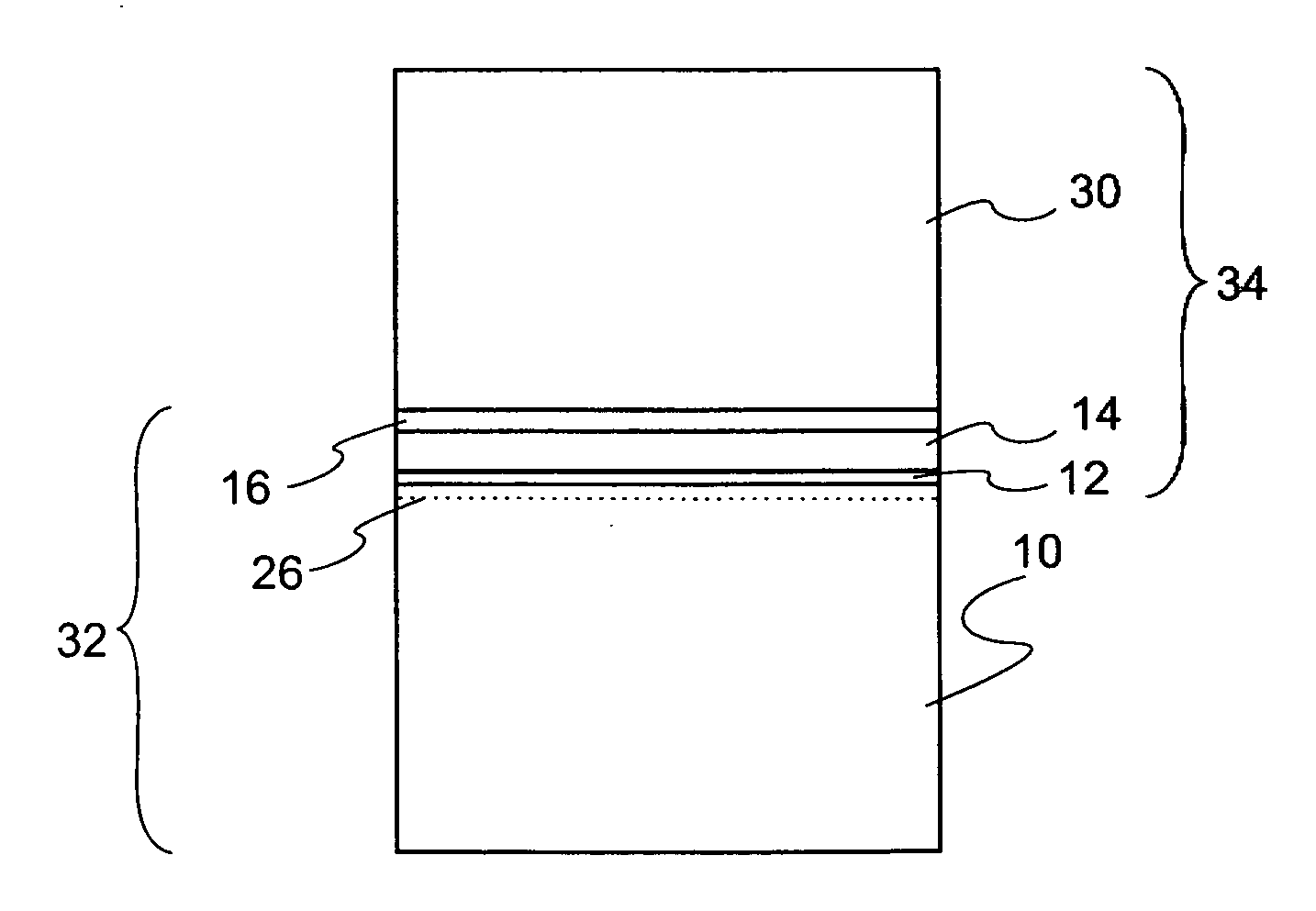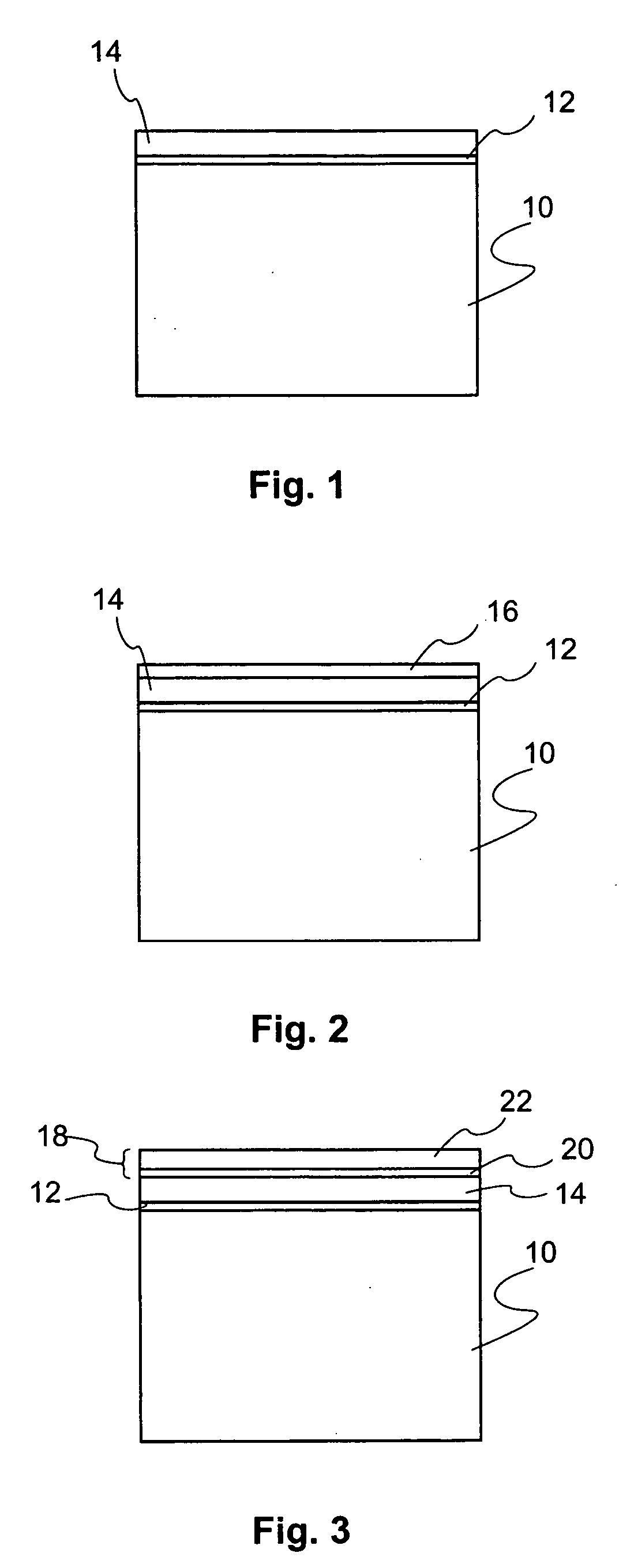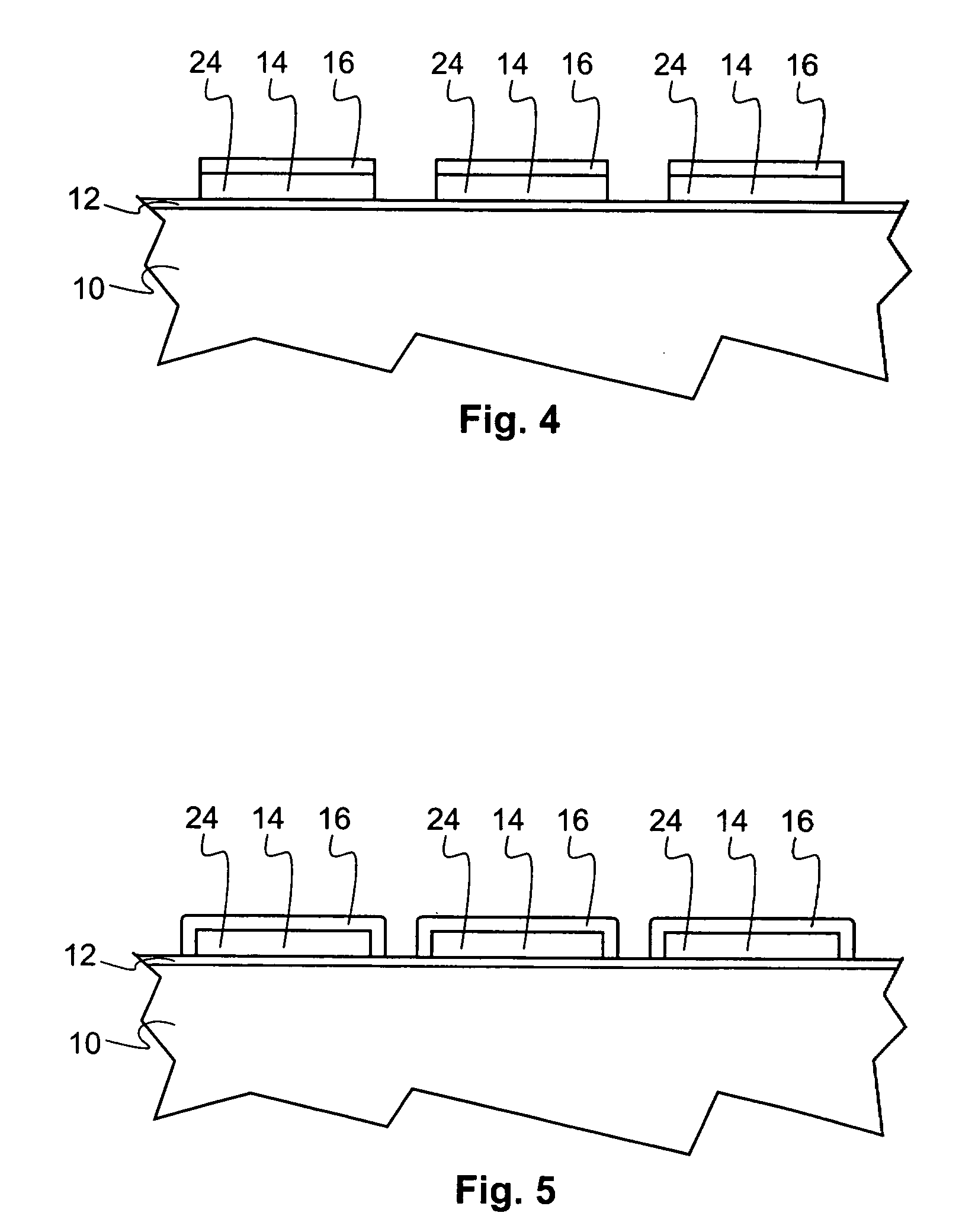Relaxation of a strained layer using a molten layer
a molten layer and relaxation technology, applied in the field of manufacturing crystalline wafers, can solve the problems of requiring care and implementation, consuming considerable time and expense in the formation of variable compositions in buffer layers,
- Summary
- Abstract
- Description
- Claims
- Application Information
AI Technical Summary
Benefits of technology
Problems solved by technology
Method used
Image
Examples
Embodiment Construction
[0022] Referring to FIG. 1, in a preferred method of producing a wafer with a high quality, crystalline relaxed layer, a composite structure is produced. The structure includes support substrate 10, which in the preferred embodiment is made of silicon. The support substrate 10 can alternatively include several layers, preferably with a crystalline layer at its top, such as of a semiconductor material.
[0023] An interface layer 12 is associated with the support substrate 10, and a strained layer 14, which is preferably crystalline, is associated with the interface layer 12. Thus, the interface layer 12 is preferably sandwiched between the support substrate 10 and the strained layer 14.
[0024] Preferably, the nominal lattice parameter of the support substrate 10 and the strained layer 14 are different, such that when associated on the interface layer 12, the strained layer 14 in is a strained state. In the strained state, the crystalline structure of the strained layer 14 is elastical...
PUM
 Login to View More
Login to View More Abstract
Description
Claims
Application Information
 Login to View More
Login to View More - R&D
- Intellectual Property
- Life Sciences
- Materials
- Tech Scout
- Unparalleled Data Quality
- Higher Quality Content
- 60% Fewer Hallucinations
Browse by: Latest US Patents, China's latest patents, Technical Efficacy Thesaurus, Application Domain, Technology Topic, Popular Technical Reports.
© 2025 PatSnap. All rights reserved.Legal|Privacy policy|Modern Slavery Act Transparency Statement|Sitemap|About US| Contact US: help@patsnap.com



